You are here
Kanysh Satpaev in Zhezkazgan.
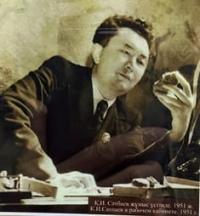
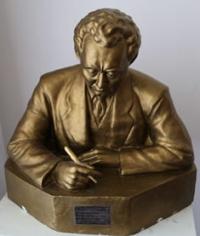
Tours in Ulytau region.
"Dzhezkazgan is potentially one of the richest copper provinces in the world, in favor of which most of the famous copper provinces of America will give way in the future."
Kanysh Satpaev.
Trip to Ulytau region.
In June 1926, Kanysh Satpaev graduated from the Tomsk Technological Institute with a degree in geological exploration of mineral deposits. He became the first engineer-geologist among the Kazakh people in its entire centuries-old history. This required a lot. He knew about the untold wealth of underground storerooms.
And he was faced with the task of finding, revealing them and putting them at the service of the people and the country. On his own initiative, he appeared at the disposal of KazTSINKh with a proposal to work in any area of his native Kazakhstan.
At that time, the country was entering a period of industrialization and electrification. This required a lot of copper. In 1925, by order of the Council of Labor and Defense of the USSR, work began on the restoration of the Atbasar (Zhezkazgan) copper mines in Central Kazakhstan, which belonged to British concessionaires before the revolution.
The construction of the Karsakpai copper smelter, copper mines and coal mines in Baikonur was not completed by the British. Years passed and mine workings, the equipment fell into partial or complete disrepair. The completion of the copper plant was entrusted to the newly created All-Union Trust "Atbastsvetmet" under the Supreme Economic Council of the USSR.
This trust was also entrusted with the task of restoring the enterprises of the Spassky copper mines, which included the Spassky copper smelter, the Karaganda coal mine and the Uspensky mine, also previously owned by British concessionaires.
It was to the trust that a young specialist K. I. Satpaev was sent to work. In those years, even getting to the Zhezkazgan mines was not easy. He, in the back of a car loaded to the top, had to overcome hundreds of kilometers off-road across the steppe breathing heat.
And the young engineer-geologist, not noticing the road difficulties, admired the steppe landscapes, so reminiscent of his native places where he grew up. In the trust "Atbastsvetmet" geologist K.I. Satpaev worked from autumn 1926 to February 1929.
In the summer, he traveled to the geological sites of Atbastsvetmet, was engaged in research on the Dzhezkazgan and Uspensky copper ore deposits, the Karaganda coal basin and the Baikonur brown coal deposit. In 1927, the first drilling rig was already in operation here, and in 1928 two were already in operation.
In the autumn of 1926, K.I. Satpaev arrived in Karsakpai, where the work administration was located. Here he studied the few geological documents left by the British, as well as the reports of a small group of Geolcom under the guidance of an experienced geologist I. S. Yagovkin.
Here Kanysh Satpaev met Ivan Stepanovich Yagovkin, in those years one of the best specialists in the geology of Kazakhstan. And most importantly, the young geologist Kanysh Satpaev carefully studied the outcrop of the ore body, the geology of the Zhezkazgan and other mineral deposits of the Karsakpai region. He was interested in literally everything - both geography and archaeological finds.
Soon, on January 26, 1927, K.I. Satpaev wrote his first article “Karsakpay region and its prospects”, in which, along with brief information about geography and economy, he spoke about its minerals, the wealth of its subsoil, for the first time raised the issue about the huge potential of the Zhezkazgan region and the need to develop the metallurgical industry here.
He noted that the Karsakpai plant under construction is only the beginning of the industrialization of the region. He prophetically wrote: "Dzhezkazgan is potentially one of the richest copper provinces in the world, in favor of which most of the known copper provinces of America will give way in the future."
For a systematic and comprehensive study of the mineral wealth of the region, K.I. Satpaev substantiated the need to increase geological exploration, develop agriculture, and create a food base for the future industrial center.
K.I. Satpayev finished his article about Zhezkazgan with the words: “When the whistle of a factory siren first sweeps over Ulutau, it will undoubtedly find its powerful response far in all corners of Kazakhstan. The amplifier of this "echo" will be: the historical popularity of Ulutau, its central location, the curiosity of the Kazakh people and even its natural inclination to songwriting, and in the new songs, no longer the former notes of longing and despair, but others , more cheerful notes, full of power and courage.
These will be the songs of the new, emerging industrial Kazakhstan.” These words of the young
As early as next year, 1927, based on the results of geological exploration for the summer period, K. I. Satpaev published an article “Atbassar copper business and its prospects (geological knowledge of Zhezkazgan at the beginning of 1928)”.
In this article, the author, noting the significant areal distribution of the Dzhezkazgan ore-bearing suite in the region, comes to the conclusion that the Zhezkazgan deposit in terms of its reserves is intended to become the most important base for the copper industry of the USSR, justified the need to build a new large copper plant here already in the first five years.
With the launch of the Karsakpay plant, the Atbastsvetmet trust was transferred to Karsakpay at the beginning of 1929, where the chief geologist of the department of the Karsakpay plant. In Zhezkazgan, only two machines worked, and even then only in the summer.
The few sets of drilling rigs left over from the British were old and worn out. In order to increase the efficiency of drilling, K.I.Satpayev proposed to build light Kazakh felt yurts around the machines instead of bulky buildings from expensive imported timber, which took only a few hours to install and carry, and were also warmer.
This rationalization gave a great saving of working time. In winter, drilling rigs under the cover of yurts successfully worked even in severe frosts and snowstorms. Already the first deep wells have made it possible to significantly increase the reserves of the field. Kanysh Imantayevich Satpaev insisted on increasing the number of machines to fifteen in 1930 and to twenty machines in subsequent years. Geolkom, however, considered such a pace of exploration impossible and planned the work of only three or four machines.
Geolcom justified such a plan by the organizational, personnel, material and everyday difficulties that were then in Zhezkazgan. There were no engineers, drillers, collectors, laboratory assistants, foremen, etc. There were no necessary laboratories, mechanical workshops, a garage, etc.
K.I. Satpayev created a network of courses that trained drilling foremen, collectors, laboratory assistants, turners, locksmiths , drivers, etc. A bonus payment system was developed for the training of each skilled worker and craftsman from the local population.
Satpayev selected the most capable, hardworking and responsible from the local youth and sent them to study in Leningrad, Moscow and other cities of the country. By spring, the drilling masters who had studied there returned from Leningrad - the first highly qualified Kazakh drillers.
An American drilling specialist worked at the Achisai lead deposit in Karatau, who knew how to mint diamond core bits for a drilling projectile. Kanysh Imantayevich immediately sent Egizek Beisalbaev to Achisai to study the skill of chasing crowns. In subsequent years, this talented driller organized his own school of chasers, drill masters, who perfectly mastered this art.
At the insistence of Kanysh Imantayevich, through agreements with institutions and organizations, topographic and geological surveys were carried out in almost the entire Zhezkazgan region. Geophysical methods, which had just begun to be used in exploration, were immediately widely developed in Zhezkazgan in various forms.
Having found in old applications brief information about coal outcrops in the Kiyakty region, K. I. Satpaev visited this deposit, gave a positive conclusion for geological exploration. And already in the following year, search work began there.
He had time everywhere, in Karsakpai, Zhezkazgan, Baikonur, in iron-manganese flux quarries in the area of Naizatas and Dzhezda, in the Kurgasyn lead deposit. Having visited the Bolattamskoe deposit of pyrite-bearing lignite, Kanysh Imantaevich suggested that the plant abandon the expensive Ural pyrite, which was used as a flux at that time, and switch to Bolattamsky pyrite.
Boldly nominating Zhezkazgan as one of the potentially powerful copper provinces of the Soviet Union, Kanysh Imantayevich, in the five-year plan of geological exploration compiled by him in those years, provided for a wide scope of well drilling. According to this plan, in the 1930 season, the number of drilling rigs was to reach fifteen.
Geolcom considered this plan a fantasy. The comparatively negligible reserves that Geolcom's consultants foresaw, and the squalidly limited drilling footage they recommended to fully explore Zhezkazgan, were utterly negligible for the giant Zhezkazgan.
At the suggestion of K.I. Satpayev, the number of operating drilling rigs in Zhezkazgan was increased in 1930 to ten, in 1931 to fifteen, and in 1932 to twenty. To increase the efficiency of their work, Kanysh Imantayevich sought to use all the innovations in drilling skills. After reading in a special magazine information about the application of the method of filling large portions of drilling shot, he immediately decided to apply it in order to abandon expensive diamonds.
And this way gave good foremen, etc. The team of geologists worked with enthusiasm. In Taskuduk, not far from Dzhezkazgan, a new settlement of geologists grew up, and in Zhezkazgan a mechanical workshop, a chemical laboratory, a collector, a garage, a technical warehouse, and a core storage were created. In Zhezkazgan, a cameral service was well organized, ore samples were subjected to high-quality petrographic and mineralogical studies.
he explored reserves of copper ore grew every year. By the end of 1931, such reserves of copper ore were discovered in the bowels of Dzhezkazgan, which put this deposit in first place in the USSR. At the same time, exploration work at the Baikonur and Kiyaktinsky coal deposits continued.
Geological teams continued to explore the vast territory of the Dzhezkazgan-Ulutau region. They comprehensively studied its bowels, along with copper, large reserves of manganese, iron, coal and other minerals were discovered.
The reserves and technological properties of non-metallic mineral deposits - sands, clays, limestone, gypsum and other materials necessary for the construction and production needs of the Big Dzhezkazgan Combine were searched and studied.
At the beginning of 1932, the work of Kanysh Imantayevich "Dzhezkazgan copper ore region and its mineral resources" was published. In this new work, the results of extensive exploration work in the Zhezkazgan region for 1929 - 1931 were summed up, a systematic stratigraphic column of the rocks of the Dzhezkazgan ore-bearing suite was given, individual horizons of the ore body of the deposit were described for the first time, and the morphology and material composition of the ore bodies of Zhezkazgan were described.
A technical and economic assessment of the deposit and a further program of work are given. The ease of processing ores is noted. A brief description of the minerals found in the Zhezkazgan region is also given: copper, iron, manganese, sulfur pyrite, coal, gold, lead, asbestos, refractories, barite, building materials.
The Karsakpai plant turned out to be too small to develop the bowels of such a rich field as Zhezkazgan. To accelerate and more fully use the natural resources of the region, K.I. Satpaev proposed a number of important national economic measures: to build a railway from the Karaganda coal basin to Zhezkazgan through the Atasu iron ore region, to start building the Big Zhezkazgan Combine, including it in the number of shock construction projects in the country; to speed up exploration work in the Zhezkazgan region, in the second five-year plan to create a plant for the smelting of ferrous metals, a ferromanganese plant and other production centers.
A broad formulation and an integrated approach to the development of the unique natural resources of Zhezkazgan and adjacent areas, the desire to put them at the service of the national economy of the country as soon as possible became characteristic features of the talented scientist K.I. Satpaev, which appeared from the first days of his practical activity.
And the authoritative opinion of Satpayev was heard. Design work has already been carried out, preparations have begun for the construction of a large metallurgical plant, work was underway to supply water to the future huge enterprise.
For this purpose, the largest specialists of our country were attracted to Dzhezkazgan. And in all big and small cases Kanysh Imantayevich took an active part. By the beginning of 1933, more than seven hundred prospecting geologists worked in Zhezkazgan, many of whom were from the surrounding area.
From them Kanysh Imantayevich raised many true enthusiasts, masters of his craft. Every year, the Zhezkazgan land more and more generously opened its underground storerooms. However, the diverse activity of the pioneers of Zhezkazgan, headed by its true leader Kanysh Imantayevich Satpaev, was paralyzed in February 1933 due to the refusal of Glavtsvetmet to finance the continuation of exploration work in the Zhezkazgan region.
The garage, workshops, laboratories were transferred to the plant, the number of operating drilling rigs was reduced to a minimum, many workers were sent on leave without pay. How to retain highly qualified personnel?
For the sake of saving his offspring - Big Zhezkazgan K.I. Satpayev had to join the fight with the ministerial Goliath - Glavtsvetmet. And in this struggle, Kanysh showed his will, perseverance and determination. Kanysh Imaitaevich convinced that the difficulties were temporary and would be overcome.
And they believed him. In the harsh winter time, he set off on horseback on a four-hundred-kilometer road to the Zhusaly station and further to Moscow in order to stop the bureaucratic lawlessness. In Moscow, Kanysh Imantayevich went through all the instances in Glavtsvetmet and the Main Geological Prospecting Department of the Supreme Council of National Economy of the USSR, everywhere proving a non-state approach in curtailing geological exploration work at Dzhezkazgan.
And he managed to achieve a doubling of the volume of financing by Glavtsvetmet. Kanysh Imantayevich contacted trusts and departments interested in certain minerals found in gold from the Gold Exploration Trust, for coal - from the Coal Institute of the State Mining University, for oxidized copper ores from the Lakokrassyrye Trust.
As a result, in 1933, it was possible to keep the main personnel of the exploration service of Dzhezkazgan. Kanysh Imantayevich sent a significant part of the funds from contract work for exploration work at the Dzhezkazgan field.
In 1934, Glavtsvetmet completely refused to finance exploration work in Zhezkazgan. And again, K.I.Satpaev persistently demanded that Glavtsvetmet finance the continuation of exploration work in Zhezkazgan, negotiated with the GGRU and other contractors.
And he again managed to keep the cadres of geologists, and again send a significant part of the funds received for contract work to replenish the reserves of Zhezkazgan copper ore. The exploration team, inspired by the conviction, optimism and courage of Kanysh Imantayevich, steadfastly and patiently withstood all the hardships that fell on them, and without losing faith in the future of Dzhezkazgan.
In these difficult years, Kanysh Imantaevich, with his characteristic passion and energy, published articles in the central and republican press, in magazines and newspapers about the problems and prospects of Greater Zhezkazgan.
Despite the financial difficulties, the catastrophic reduction in appropriations for the exploration of Zhezkazgan, the geological reserves of copper in the Zhezkazgan deposit have been steadily increasing every year. By the end of 1934, along with the copper reserves submitted for approval to the CDC, the reserves of lead, zinc and silver were also calculated.
In the accompanying geological note, compiled under the leadership of K.I. Satpaev, the main features of the geological structure were described, the patterns of metallogeny of the Zhezkazgan region were established.
The calculation of the reserves and the content of the note were highly appreciated by an experienced geologist, the chief expert of the Central Committee on Zhezkazgan M.P. Rusakov wrote: “The entire calculation, compiled under the guidance of the best expert on Zhezkazgan K.I. Satpaev, is distinguished by exceptional systematicity and high quality of processing materials ".
All ore reserves of Zhezkazgan were approved without changes, and the research and methodological work carried out by the geological exploration department of the Zhezkazgan plant was recognized as performed at a high level.
Meanwhile, the routine wall of Glavtsvetmet reappeared before Satpaev, which seemed impossible to overcome. Funds for exploration of the Zhezkazgan deposit by Glavtsvetmet in 1935 were not planned. Contracting agreements could no longer solve the problem.
There was only one way left for Satpaev - to seek help directly from the people's commissar of heavy industry, the head of the Supreme Economic Council of the USSR, comrade Sergo Ordzhonikidze. But first, K.I. Satpaev decided to get support from the USSR Academy of Sciences, where a young geologist from the outback was accepted with understanding.
In November 1934, a special scientific session of the USSR Academy of Sciences was convened in Moscow, dedicated to the productive forces of Greater Dzhezkazgan and Greater Altai. The session was organized under the guidance of Academician A.D. Arkhangelsky.
The session was attended by outstanding scientists of the USSR, academicians B. A. Obruchev, A. D. Arkhangelsky, A. A. Maikov, I. M. Gubkin, B. E. Vedeneev, geologists of Moscow and Leningrad. In his report, Kanysh Imantayevich spoke about the geology of the Zhezkazgan region, a comprehensive study of its bowels, about the huge mineral wealth discovered - the copper ore of Zhezkazgan, the iron ores of Karsakpai and Naizatas, the manganese ores of Dzhezda, deposits of coal, gold, lead, rare metals, refractories, fluxes and mineral building materials.
Kanysh Imantayevich for the first time presented here in detail his original ideas about the genesis of the deposit, about the in-situ tectonics of the stratification of rocks, primarily copper ores. And Satpaev's ideas were heard.
Outstanding scientists of the country supported the young Kazakh geologist, recommended to continue the systematic study of the mineral resources of the richest Zhezkazgan region. After the session of the Academy of Sciences of the USSR, Kanysh Imantayevich began to seek an appointment with the people's commissar of heavy industry, Sergo Ordzhonikidze, in order to finally resolve the issue of the future fate of Zhezkazgan, the exploration of its mineral resources, the construction of a copper smelter and a railway.
And this reception took place in December 1934. Sergo Ordzhonikidze warmly received Satpaev, asked in detail about the reserves and features of the occurrence of the ore body of the deposit, about the climatic and natural conditions of the region, about the people of Zhezkazgan.
Kanysh Imantayevich spoke about the existing difficulties in financing exploration work, expressed his conviction to the people's commissar in the enormous wealth of the subsoil of the Zhezkazgan region. The People's Commissar confirmed that it is necessary to systematically continue exploration work, promised to allocate the necessary funds for this.
Kanysh Imantayevich left Comrade Sergo in an enthusiastic mood. He conquered him with attention, Caucasian charm, and most importantly, a complete understanding of the essence of the matter and support in the further development of the Big J Zhezkazgan plant.
There are the richest reserves of copper ores. They are located in the depths of Central Kazakhstan, far from the railways. It is necessary to quickly build a railway from Karaganda to Zhezkazgan. At the same time, he issued an order to start preparatory work for the construction of the Big Zhezkazgan copper smelter.
Design Institute Giprotsvetmet was entrusted with leading the design and overseeing the progress of design and construction work. In the summer of 1935, surveys began on the route of this road, and in the following year, its construction began.
By the XXth anniversary of the October Revolution, a broad-gauge railway with a length of over 400 kilometers was brought to Dzhezkazgan. Inspired by success, Kanysh Imantayevich continued exploration work on a larger scale.
Reconnaissance detachments worked in various parts of the Zhezkazgan-Ulutau region, including the Kiyaktinsky coal deposit, Zhezdinsky - manganese ores, Karsakpaysky - ferruginous quartzites and Naizatassky - iron ores.
Now he was seized by the idea of creating ferrous metallurgy in Central Kazakhstan. Kanysh Imantayevich traveled around the geological parties in an old truck, getting acquainted with the results obtained by them in the study of geology and new finds. structure of the region and looking for more and more new wealth.
The field of activity of his parties has already gone beyond the Zhezkazgan-Ulutau region. Satpayev was also interested in the iron ore deposits of Atasu, copper ores - Terekty, Aulie-Tas, Atbasar cuprous sandstones and gold deposits: Myk, in the north-west - lead in the Kurgasyn deposit, Turgay bauxites and copper ores on Turgay, Taskur cuprous sandstones on in the south - deposits of ferruginous quartzites in the Hungry Steppe, etc.
Materials of summer expeditions were carefully studied and processed in winter. In the Karsakpai and Zhezkazgan laboratories, analyzes of new ores and numerous core samples from boreholes drilled in Zhezkazgan were carried out, maps and sections were drawn, reserves of explored minerals were calculated. All this work was led by Kanysh Imantayevich, sitting until late at night in his office.
With the growth in the volume of geological exploration, the research sector grew, assay, mineralogical, petrographic, schlich, building materials, photo and microphoto laboratories were created. Geological exploration workers were sent to research institutes in Moscow, got acquainted with the methods used to study rocks.
In the created geological museum, samples of ores and minerals from the deposits of the Dzhezkazgan-Ulutau region were collected. Kanysh Imantayevich impressed with his high capacity for work. His authority among the workers and employees was consistently high.
At production meetings, Kanysh Imantayevich clearly set out the goals and objectives of teams of geologists, inspired the team to fulfill them. Each employee became clear about the tasks facing him. Trips through the vast steppe expanses of Sary-Arka, the tart aroma of wormwood, gray waves of feather grass, small barely noticeable steppe streams - all this brought genuine joy and happiness to Kanysh Imantayevich.
Looking at his dear native landscapes, he, sitting in the cab with the driver, sometimes quietly sang his favorite songs of youth, full of lyrics and sincerity. At short stops in oncoming villages, Kanysh Imantayevich attracted people with his simplicity, readiness to listen, help with advice, and if necessary, by deed.
Such meetings, warmed by the kindness and talent of this outstanding person, remained forever in the memory of people. In these trips across the steppe, literally everything attracted the attention of the inquisitive Kanysh Imantayevich.
Once, while examining the outcrops of slates, he discovered rock paintings on them and photographed them. Having learned that in Ulytau on Mount Altyn-Shoku there is a stone with incomprehensible writings, Kanysh Imantayevich went to get acquainted with him.
He saw the inscriptions in Arabic, read them and made sure that this stone is a unique historical monument, telling about the campaign of the great Timur in the Kazakh steppes. Kanysh Imantaevich reported these archaeological finds in the press.
The stone was transported to the Leningrad Hermitage. In particular, the attention of Kanysh Imantayevich was attracted by traces of ancient developments, in the Aulie-Tas region - the ruins of a metallurgists' furnace, and in Zhezkazgan - mining.
Excavations were carried out here and the remains of the ancient “concentration factory” and “metallurgical plant” were discovered, tools were found, which today adorn the Karsakpai Geological Museum. The thought of Big Dzhezkazgan did not leave Kanysh Imantayevich.
The Zhezkazgan copper deposit in terms of reserves was second only to the famous Chukikamata deposit in South America and the equally famous areas of Katanga and Northern Rhodesia in South America. At the beginning of 1938, he was summoned to Moscow to report to the People's Commissariat of Heavy Industry on the issue of Bolshoy Dzhezkazgan.
Joyful and reassured, he returned from this trip. The people's commissariat fully supported his ideas about the development of Dzhezkazgan. New concerns arose before Kanysh Imantayevich: he tirelessly followed the development of the project of the future plant, took part in choosing a place for the plant and the city, he was concerned about technical water supply, landscaping of the future city, and much more. The discovered reserves of Dzhezkazgan increased every day.
The government of the USSR awarded Kanysh Imantayevich with the Order of Lenin. Kanysh Imantayevich accepted this joy with great excitement. The team, in turn, was proud of their beloved leader. Increasingly, the attention of Kanysh Imantayevich begins to attract the question of the development of ferrous metallurgy in Kazakhstan on the basis of the Atasui and Karsakpai iron ore deposits.
Exploration of Karsakpai ferruginous quartzites was significantly expanded for their industrial use in the future ferrous metallurgy of Kazakhstan. After exploring the Kiyaktinskoye deposit and studying the reserves and qualitative composition of brown coal from this deposit, Kanysh Imantayevich recommended, on the basis of this deposit, to continue the broad-gauge railway from Zhezkazgan to the west - to the Tashkent railway in order to connect Zhezkazgan with the center of the country by the shortest route.
Being extremely busy with work on the exploration of the bowels of the Zhezkazgan region, Kanysh Imantayevich found time and wrote articles in which he summed up the results of various stages of work. During his work in Zhezkazgan, he published 46 scientific articles in various geological and economic journals, which covered both the geology of the Zhezkazgan region and individual deposits studied by him, and the development of the economy of this region and its facilities, the formation of non-ferrous and ferrous metallurgy of the Central Kazakhstan.
Kanysh Imantayevich Satpayev worked in Zhezkazgan for fifteen years. A lot has changed over the years. Mines grew, highly mechanized mines appeared, factory and mine settlements changed, gardens and orchards turned green.
And most importantly, armed with knowledge and technology, people have grown unrecognizably. Kazakhs, yesterday's nomads, who for the first time saw the technique, were afraid to approach the car, became machinists, technicians, engineers, masters of their craft, who fell in love with it with all their heart.
The dream of Kanysh Imantayevich about industrial Kazakhstan was becoming more and more real. Fifteen years of activity of the chief geologist and head of the geological exploration service Zhezkazgan Kanysh Imantayevich Satpayev were spent in hard work on organizing a wide and complex geological study of the resources of the Zhezkazgan region, in educating and shaping qualified personnel of the geological service, especially from the environment of the local Kazakh population, in a continuous struggle for the development of the mineral resources of this naturally richest region.
And in Zhezkazgan, one of the largest centers of non-ferrous metallurgy in the country began to be created, which was connected by rail with the general network of main roads of the Soviet Union. In 1940, the question arose of transferring Kanysh Imantayevich to Alma-Ata to the post of director of the newly created Institute of Geological Sciences at the Kazakh branch of the USSR Academy of Sciences.
It was difficult for Kanysh Imantayevich to part with Zhezkazgan, to the formation of which he devoted so much effort. Although he understood the inevitability of the move, he was in no hurry with it. In March 1941, the government of the republic proposed to expedite the move to a new job.
On Sunday, June 22, 1941, a team of exploration geologists from Zhezkazgan on the banks of the Dzhezda River gathered for a farewell meeting with their leader. Over the past years, geologists have become closer, and in the words of the speakers, the joy of sincere friendship, warm memories mixed with the bitterness of the upcoming separation, the sadness of parting. And in the morning, geologists were shocked by the news of the attack on our country by Nazi Germany. A new, most crucial period in the life of the Soviet people has begun.
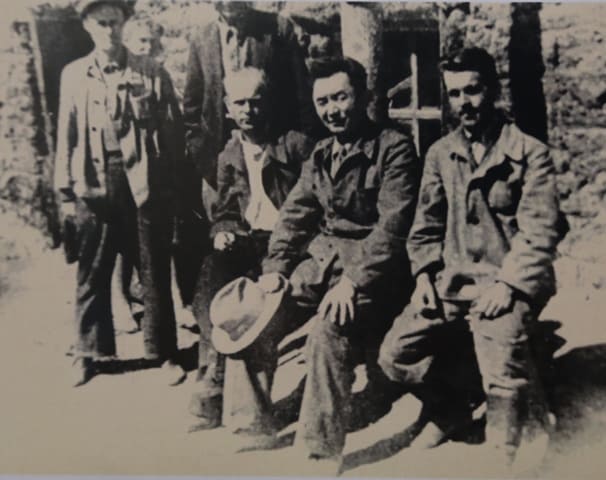
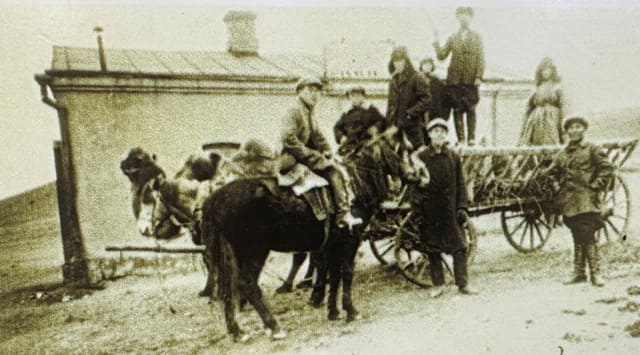
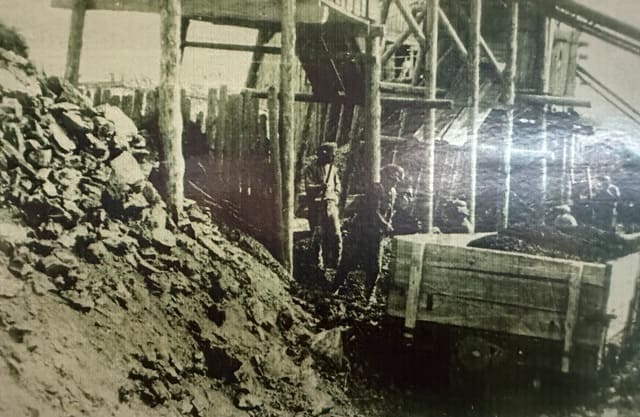
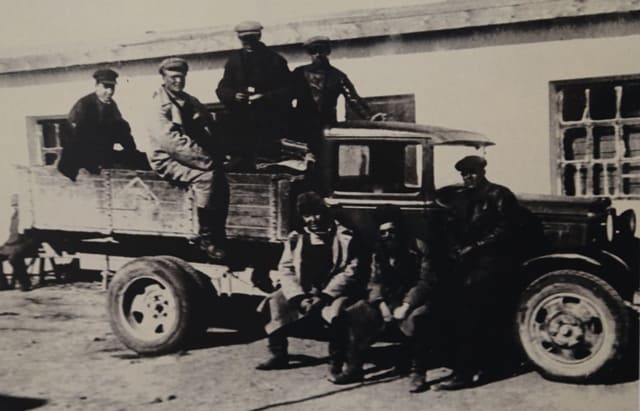
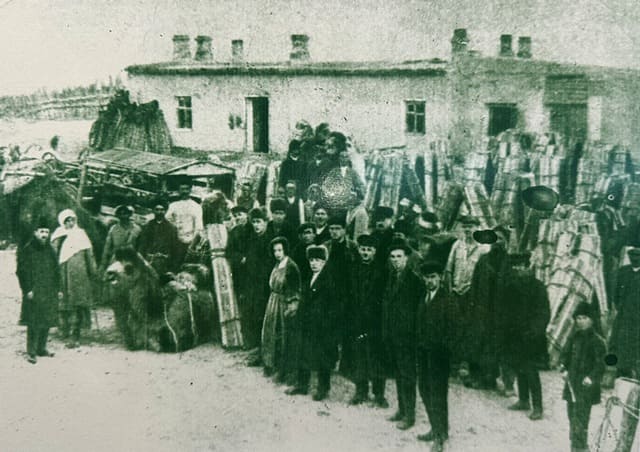
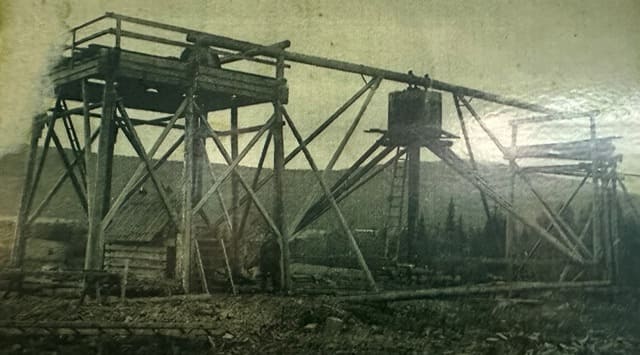
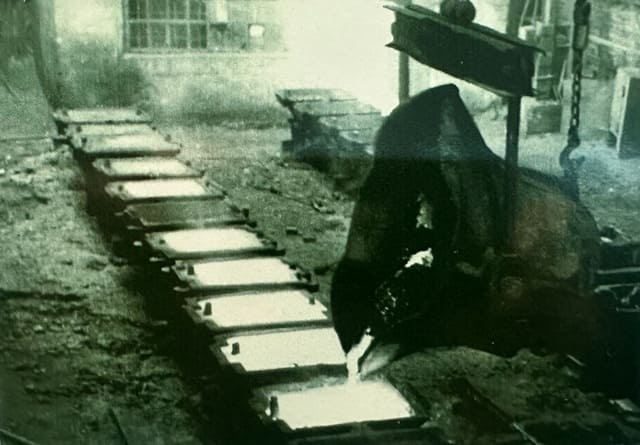
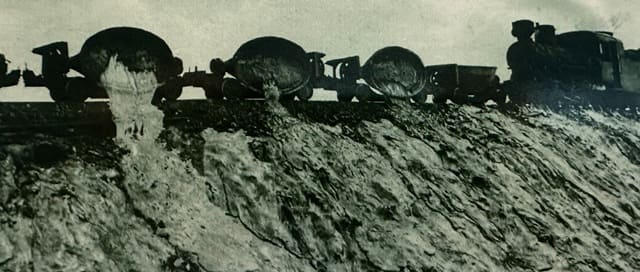
Authority
Novikov Vladimir Yakovlevitch.
http://novikovv.ru/kanish-satpaev/vtoroe-rozhdenie-zhezkazgana
Photos by
from museums: Zhezkazgan Museum of Local Lore,. the Satpaev Museum in Karsakpai, the Kazakhmys Museum in the town of Zhezkazgan.






